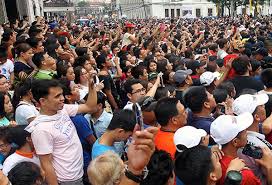
Summary:A new article argues small-scale societies are likely to be victims, rather than perpetrators, of violence.
In his book, The Better Angels of Our Nature: Why Violence has Declined, psychologist Steven Pinker argues that people who live in states are less violent than those who lived in nonstate “hunting, gathering, and horticultural societies in which our species spent most of its evolutionary history.”
In a new article in Current Anthropology, researchers Dean Falk and Charles Hildebolt question some of the assumptions made in Pinker’s book, arguing that because rates of violence are blind to actual population sizes, it remains to be seen whether or not the apparent decrease in contemporary violence is an artifact of scaling factors.
Taking an evolutionary perspective, Falk and Hildebolt compare annual deaths from intercommunity violence (“war”) for 11 chimpanzee communities, 24 human nonstates, and 19 and 22 countries that fought, respectively, in WWI and WWII. The results indicate that, rather than being more violent, people from nonstates are more vulnerable to lethal warfare compared to inhabitants of states.
The researchers’ interpretation for the pervasive trend in war death ratios is not that larger populations are less prone to violence than smaller ones, but rather that larger communities are less vulnerable to having large portions of their populations killed by (or entirely wiped out from) external enemies compared with smaller ones — i.e., that there is safety in numbers.
Ultimately, Falk and Hildebolt found that people living in small-scale societies are not inherently more violent that those living in “civilized” states, and that war deaths scale similarly with population sizes across all levels of human society.
More: Science Daily




Leave a Reply
You must be logged in to post a comment.